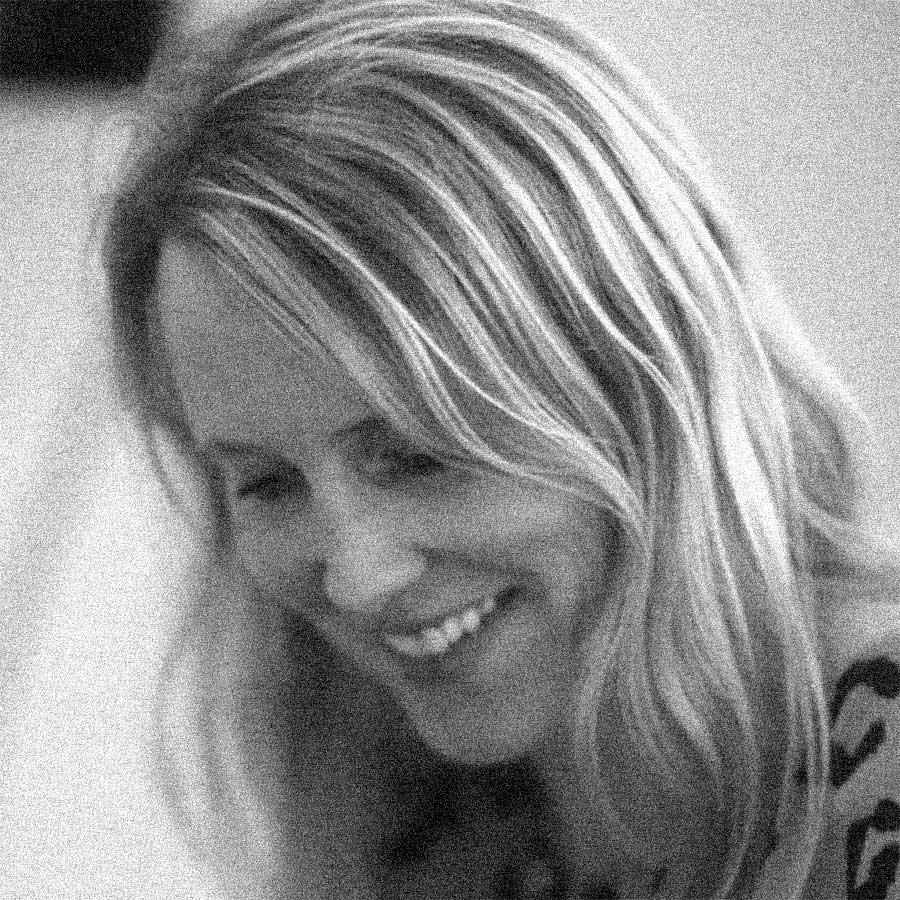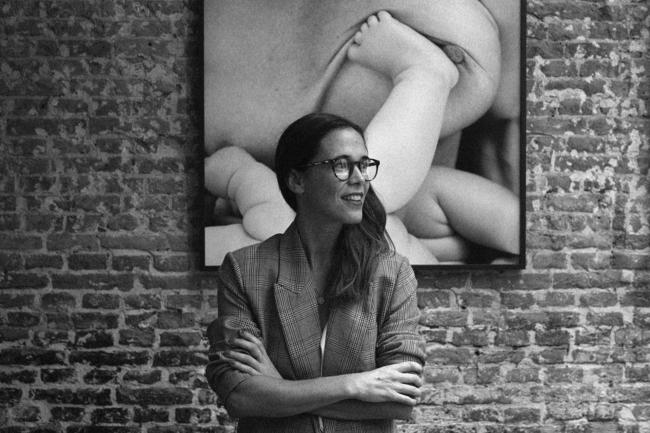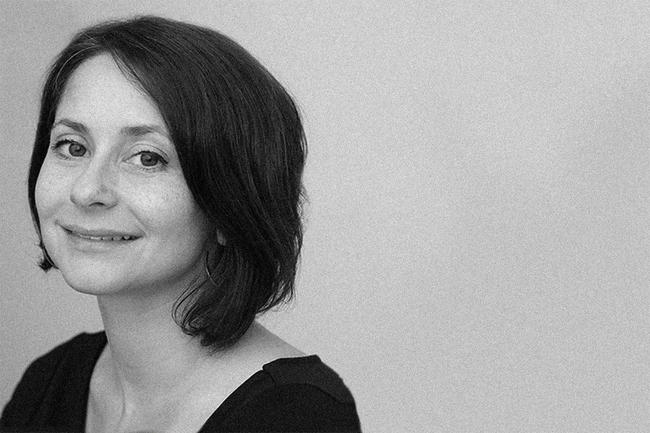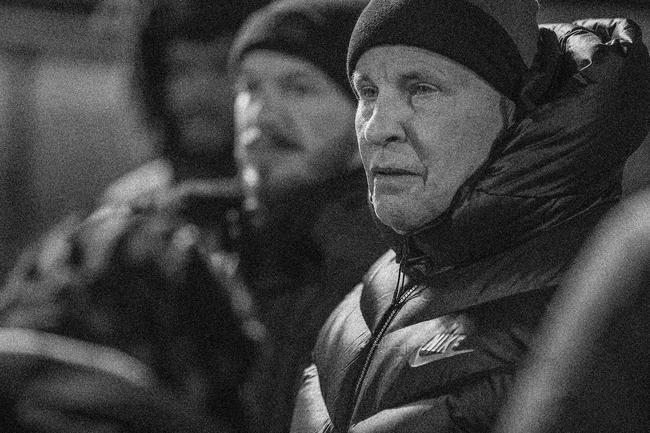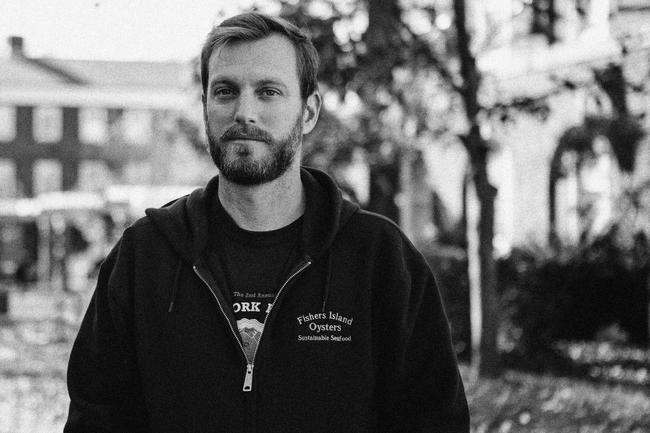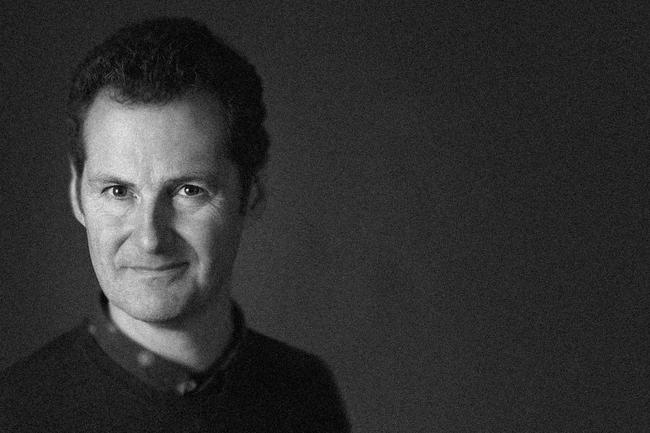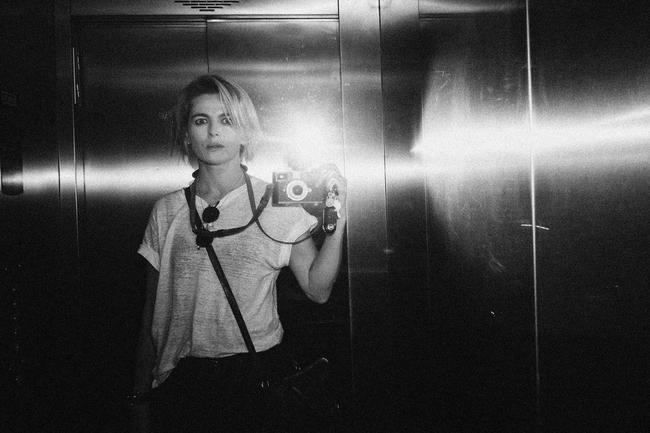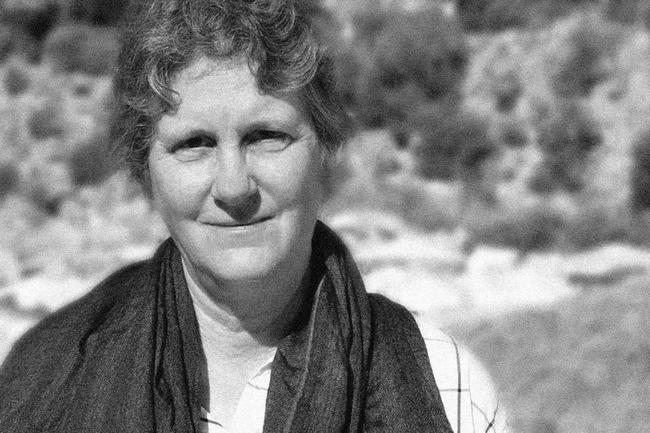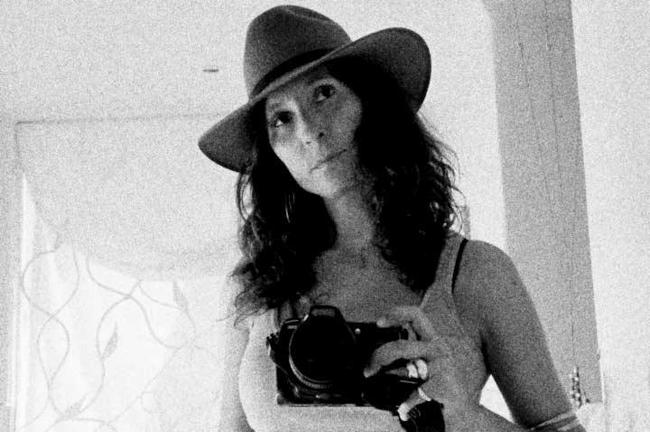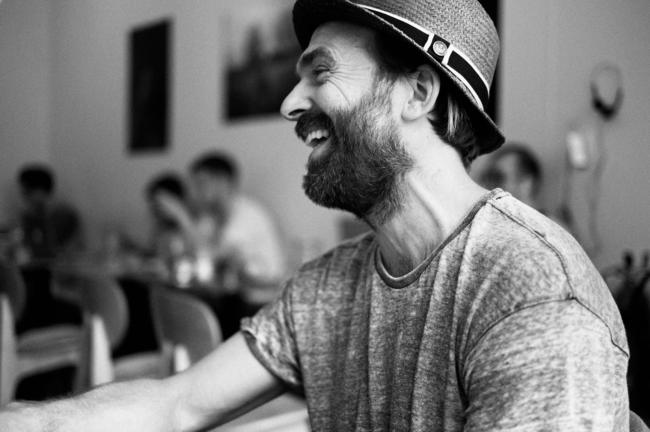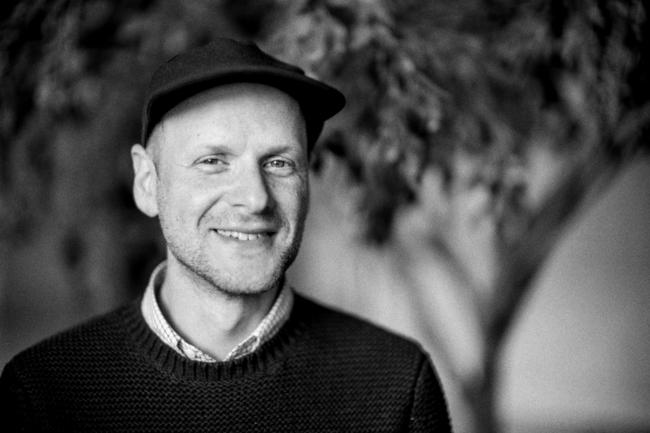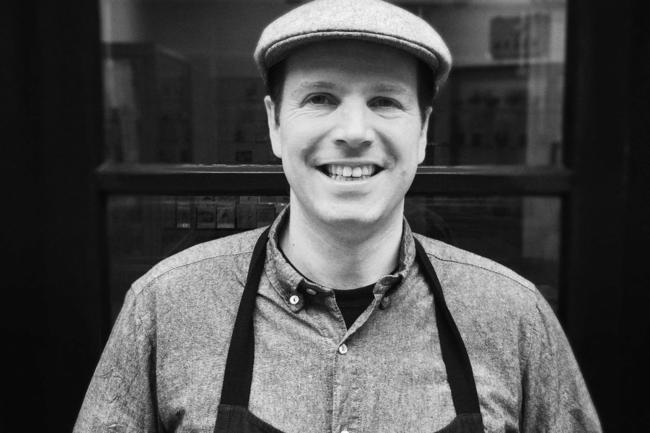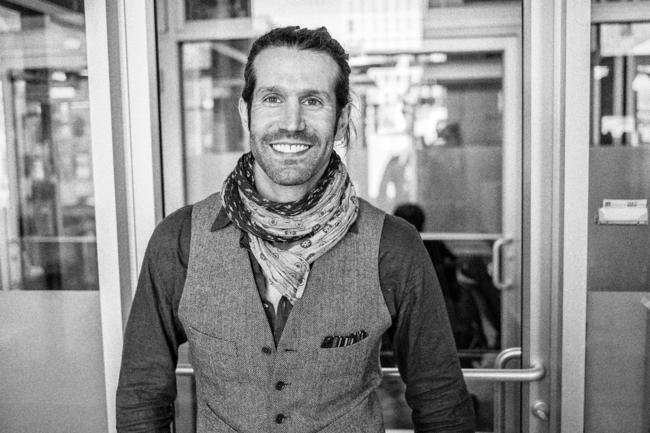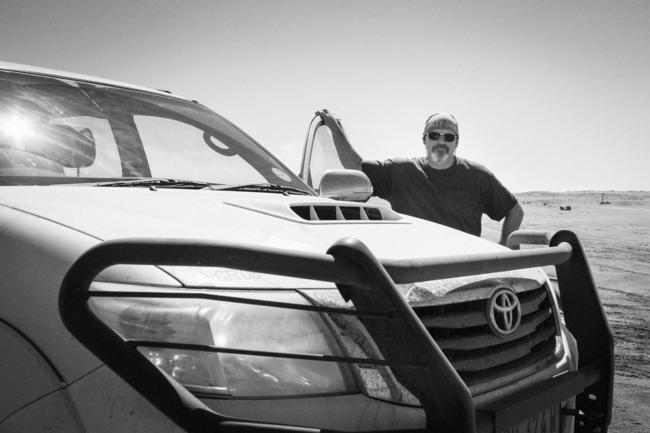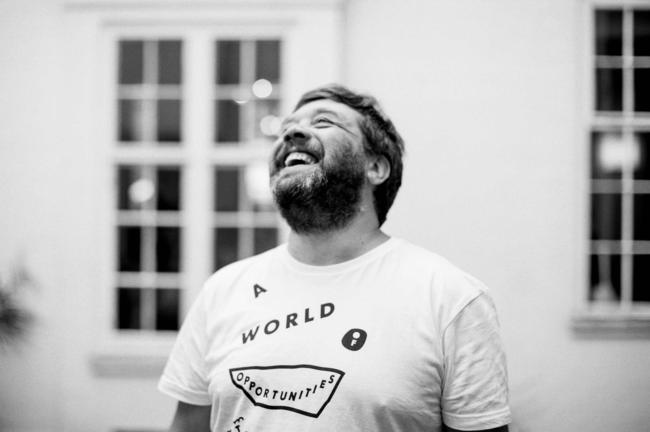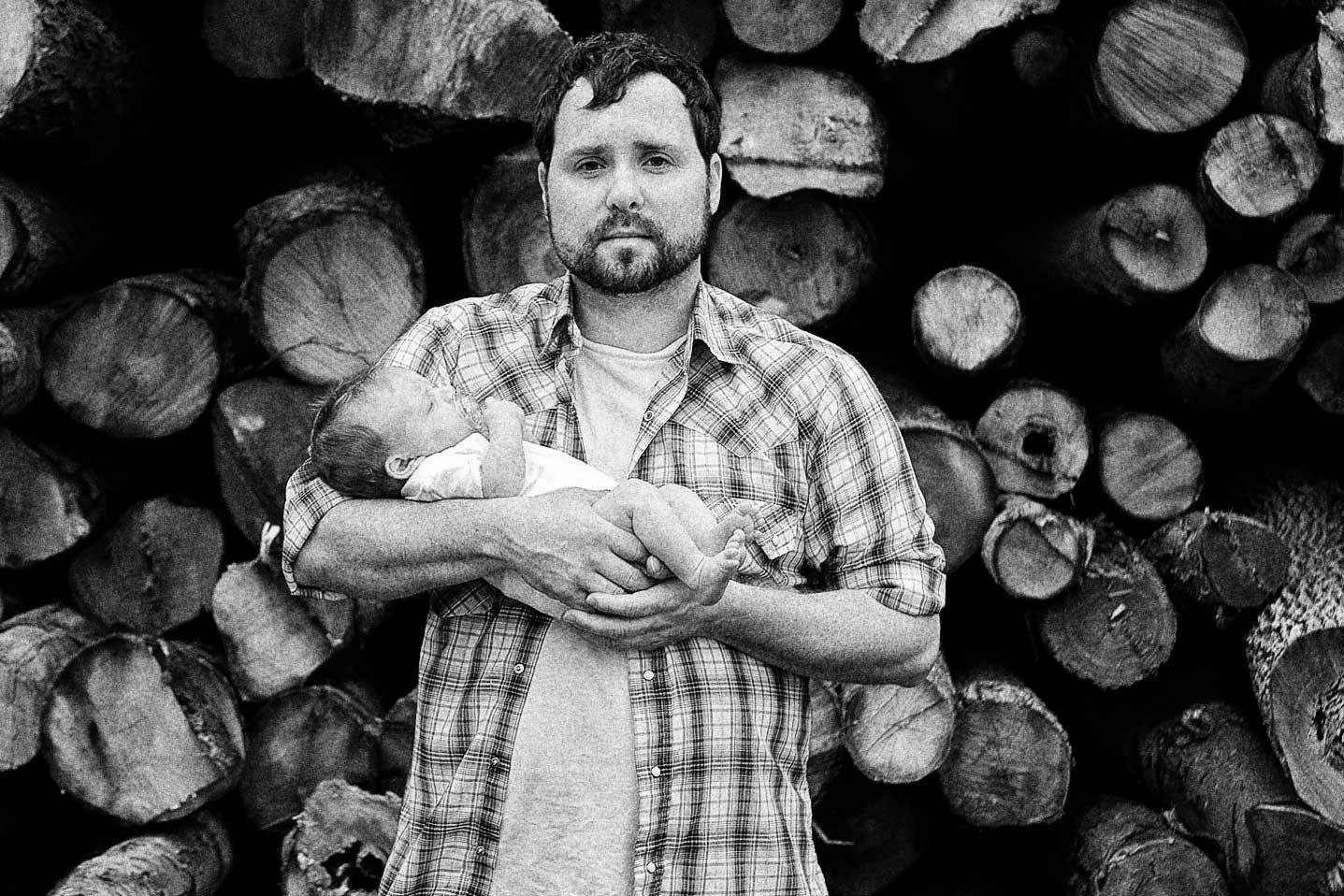
Conversation with Jesse Burke
Jesse Burke has always been a nature lover but he got known as a ‘dude’ photographer, more prone to probing masculinity with rugged, manly images. He has since gravitated towards super nature dad and new age environmentalism with his personal work.
His Wild & Precious project, which has gained a lot of attention in his home country, the U.S., is a beautiful reminder of our connection to the planet and of man’s fragile, complicated relationship with nature. With all his work, personal and commercial, Jesse just wants to make great pictures that will help make the world a better place.
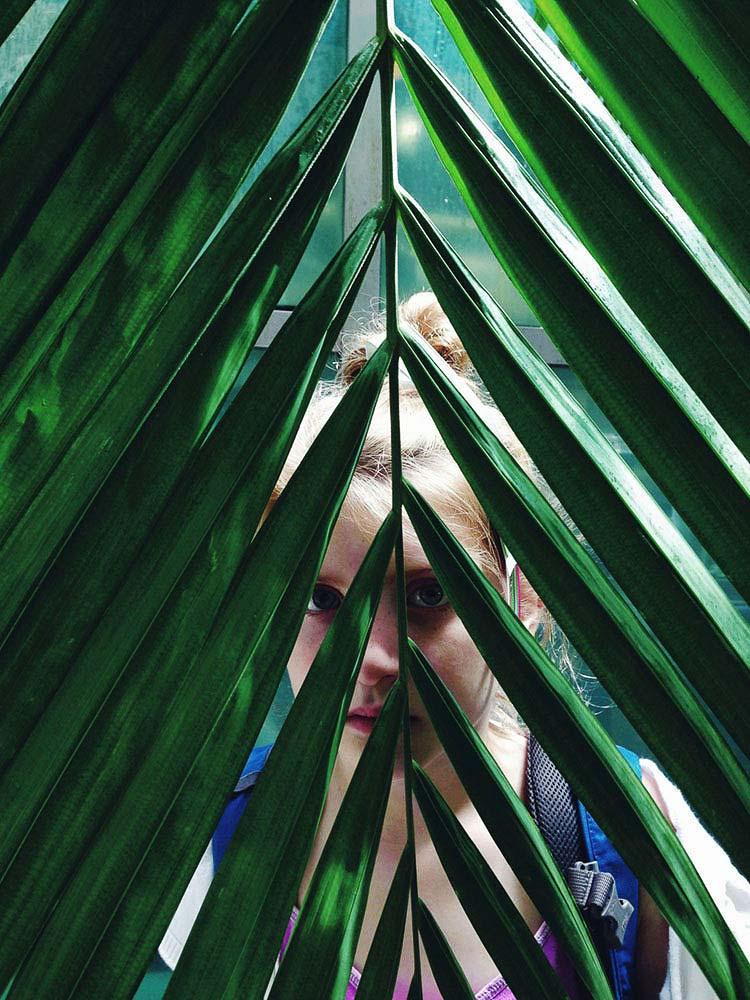
How did you end up on this path?
I took a chance on photography at community college in Arizona after moving there in my 20s and quickly fell in love with it. I was always interested in animals, nature and biology but with photography I found something I really liked. So I started pursuing it more in depth and transferred to The University of Arizona. With a bigger, more established photography programme, I really felt I‘d found my path. After graduating, I quickly realised I wasn’t done with my studies, so went to grad school to properly pursue this passion and see if anything was going to come from it.
I ended up at Rhode Island School of Design, an hour’s drive from where I grew up in New England. The act of moving home was really instrumental for me because I had lived in Arizona for a decade and had sort of become a visual artist in that time. So when I came home to live full time and was reintroduced to this landscape and group of people I had known my whole life, suddenly I was looking at it all with totally different, fresh eyes.
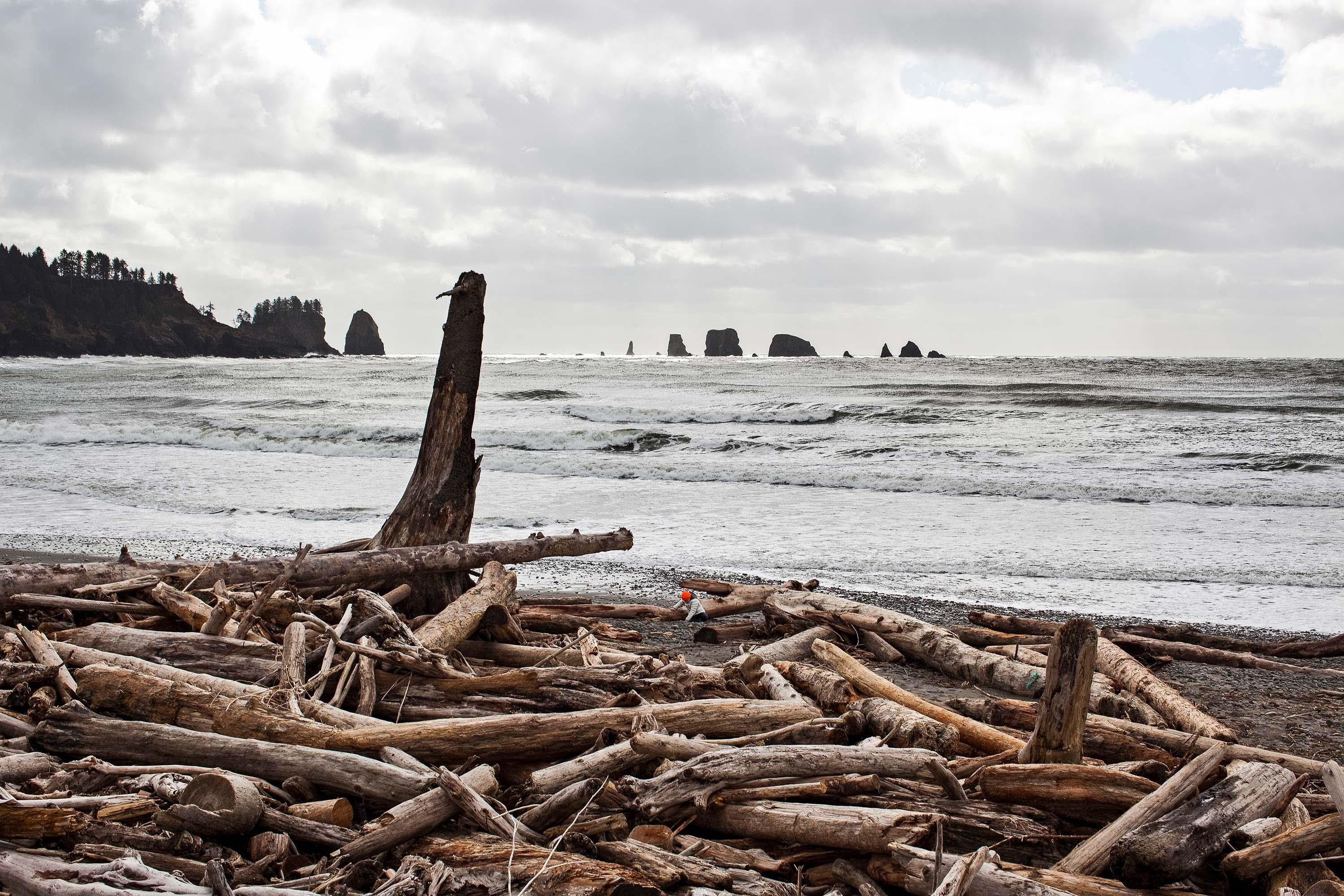
Working through the process of being a student in grad school you wonder what you’re going to do with your life. I was always interested in the commercial photography world, just as a consumer of pop culture, how photography worked in the world, and how technology, marketing and advertising all operated. I knew it was exciting so I started working commercially and I think my interest in those subjects was an easy transition from art work into commercial jobs as my photography was already inspired by these things.
What are your overriding goals?
My goal as a human, a photographer and a father is just to make my work and have it be relevant in the bigger marketplace of the global economy. I don’t just mean financially but conceptually. As a dad in my forties, I’m the perfect demographic for a lot of things happening in the world – politics, the economy, environment, or whatever particular piece of the green movement you want. I want to make good money but my hope is to make great pictures that will help make the world a better place.
As a photographer already exploring the path of humans’ relationship to nature (which was what I was doing with my first project in grad school), when I became a dad, it was logical I would explore the same path with my children, which is sort of what led me to Wild & Precious.


Tell us about this project. Why did you do it and why is it important to you?
I was trying to figure out how to navigate the world as a new parent, with all these ethical backbones: being connected to nature, animals, the seasons and weather, and making it a better place for them and us. You apply a camera to that personal agenda and there you go, you have all these pictures. The project documents my attempt at intimately introducing my daughter Clover to the natural world. When we had her I knew it was going to be important to instil in her a deep and personal connection to nature. I wanted her to appreciate and love the animals and landscape in way that was profound, so I decided to take her and physically plant her in the setting that I felt would nourish such an emotional connection. We travelled around the U.S. on a series of road trips over five years and explored and experienced all that we could. The Wild & Precious photographs, book, film and sculptures are the result of those adventures.
I want this project to appeal to the world and it has come along at the right time, when these subjects are becoming increasingly important, more commonplace. The spread of the work is able to be wider than normal; it appeals to pretty much anyone, not just parents and children, and hopefully offers an easy, accessible way to connect to the planet. It’s also about the vulnerability of youth and it’s a love story too. It has so many entry points.
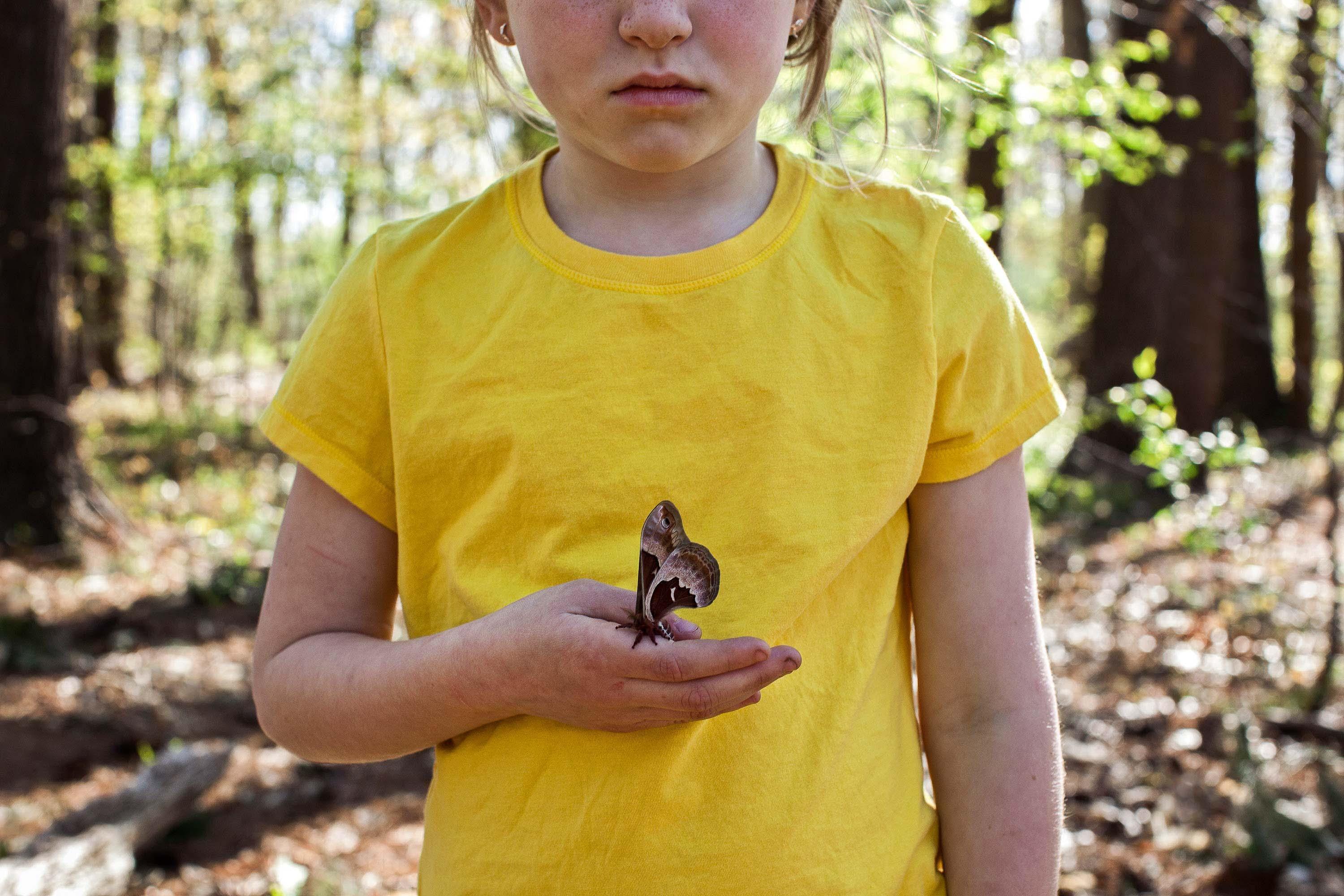
It’s so true. The project is out there at a time when people are more aware of our planet and how we need to look after it. It makes the work have more value – more context.
Can you share some of the things you’ve discovered on these trips?
We’ve been lucky enough to stumble upon the most magical of experiences. Once we encountered a dead great white shark. It’s an incredible opportunity to touch the skin of one of the most ferocious creatures on the planet. Many times the only chance you would have to be physical with such animals is when they are dead. I take these opportunities to talk Clover about the cycle of life and death. We use these experiences as a way to deepen our understanding of how nature works. She understands that life is a balance and that the system is fragile. She has also taken on the role of educator when we are out with her two younger sisters. She is committed to teaching them all she knows, all I have taught her, and all we have experienced together. It’s beautiful to watch.
There’s definitely a sense of transition from your previous work to Wild & Precious.
I had been working on a different project, Intertidal, an exploration of the men in my life, of masculinity, and who I was. I was always working with this idea of being the son and exploring the father-son relationship. I hardly ever included my daughter in my photos. My wife and I had always been outdoorsy explorers and would go hiking or to nature parks. Once we had kids, we just started bringing them along. When I took Clover on her first solo road trip with me aged 5, I took her along for fun while I worked. On the first day, out and about seeing all these landscapes, she started to wander into the frame of some pictures. She began to appear in the frame more and more and I realised I had this new group of images with my daughter in them. I started to conceptualise that with my other work. And over the course of one or two trips I realised I may be onto something. I started thinking about why I was doing this, what did it matter? I realised this is my thing – that I had transitioned out of the role of son to the role of father. What a beautiful transition. It’s obvious and organic but I was blind to it.

Suddenly all this stuff about how people connect to the landscape, what they do and what that means became Wild & Precious and it all made sense. I was taking all the elements I liked about my childhood and pushing them forward, creating new things. This is all we can ever hope to do: move forward and leave the bad behind.
In some ways it’s a presentation of the ideal. Part of photography and art is that perception is reality. It allows you to perceive me and my life in a certain way. You don’t have to be super nature dad, my job makes me that guy, but you can be inspired a little bit and think about how nature can interact in your own personal life.
In today’s world, where you’ve got Donald Trump saying climate change is a hoax, then the terrifying reality of what we have to live up to on this planet, and technology over-absorbing us everywhere, a project like Wild & Precious is important.
Yeah, I think so. And I think the video might be an even better tool than the book for our society as it’s only three minutes long, so it’s a little easier to digest than a book full of pictures. It’s also really emotional and moving.

Let’s move onto Blind, another personal project also about man’s relationship with nature.
The project happened simultaneously while shooting Wild & Precious. It was almost a commission work initially where a friend invited me to come to a hunting compound in South Carolina to take pictures. It’s a hillbilly spot in the middle of nowhere but there are these wealthy southern gentlemen who have this place they go at weekends, with a big bunkhouse and deer heads on the walls. I’ve always been interested in the idea of hunting and all its connotations.

There was a little piece of that in Intertidal – the idea of man’s complicated relationship with nature. We have this innate love and affection for nature but we also want to dominate it. So hunting is a really good example of that: initially it was a means of eating, sustaining oneself, but then it turned into a sport. But within that sport is still an instinctual desire somewhere; this idea (perhaps a much more masculine position) that fighting hurts but feels good. There’s this potential for glory and dominance but to get to that path there is blood and pain. And I feel like hunting is just like that.

That hunter-gatherer instinct; those ancestral bones, is in all boys and men, I think. Whether competing for survival, food, a prize or glory.
As someone who was more on the fondness side of hunting rather than dominance I found it really interesting as a concept and was trying to be open in terms of not judging these guys for their sport. I started to photograph them in the places they inhabited. I wanted to turn the project on its head, and have it confront itself. So the pictures are taken from the position of animal not hunter, and done at night rather than in daylight. The position of power is behind the lens, and I’m spotlighting the hidden camouflage places where the hunters are. But there are also some beautiful, vulnerable portraits of the animals and men looking all filthy, dirty and strong but also wet, vulnerable and soft.

That opposition in your pictures brings out such richness and sharpness – your eye, as the viewer, is pulled back and forth.
My goal is always to have my portraits embody both those spirits at the same time. When you add those really soft, heroic and sort of beat up gladiator photos into a bloody battle scene, you get a richer picture. You have images of dead animals, men with muddy sweatshirts and beautiful landscapes. It’s always been my mode of operation. I think we all operate on a sliding scale. Take masculinity, for example. It ranges from hyper masculine to feminine and it’s constantly sliding around. Certainly some people live at one end of the scale but for most average people it slides around. And I want my photographs to represent that timeline. As you go through the work, certainly with Intertidal, Blind and Wild & Precious, the images are meant to make you feel those emotional responses, which will hopefully trigger richer feelings about the work and a deeper understanding of it.
With Wild & Precious, the way it is installed in an exhibition, for example, is the way I want you to experience it. You walk through the space and move your head up and down, side to side, looking at pictures where some are close up and others far away, some happy, some sad, so you’re forced to zoom in and out mentally, and you’re always going back and forth on this physical and emotional journey with us.

We’ve talked a bit about what motivates you, your vision and style. If you had to characterise it, what would you say?
I would say I am a portrait photographer who shoots raw, emotional portraiture and landscape. And I think my niche is natural family man. Before I made this transition, I did get a reputation for dude photography.
Rugged images of woodcutting, jackhammering and sturdy heroes like former American Football quarterback Brett Favre spring to mind here.

Do you think you’ve evolved as a photographer?
Certainly I’ve matured into my role and become more of a master of what I want and like now. As we grow and experience new things, both in our life and work, we are more of an asset to clients.
So commercially it’s also important to you that you’re not just a camera operator, but involved in more meaningful ways, earlier on in the creative process, just as Tea & Water Pictures wants for its photographers.
It’s about coming into an established way of working and asking people to work in a very different way: getting the photographer to come in way ahead of time in the creative process, rather than hire a photographer when the creative is done, the decisions are made and clients are just looking for someone to execute it all.
Traditional commercial photography is about vendor execution. Money is money, jobs are fun, and I like working but there’s a scale of greatness when it comes to collaboration – being able to bring ideas to the table. The ethos behind Tea & Water Pictures is ideal for someone like me: work with creative people to create amazing ideas, pictures, videos or advertising material, and then put it out in the world for people to digest and respond to.
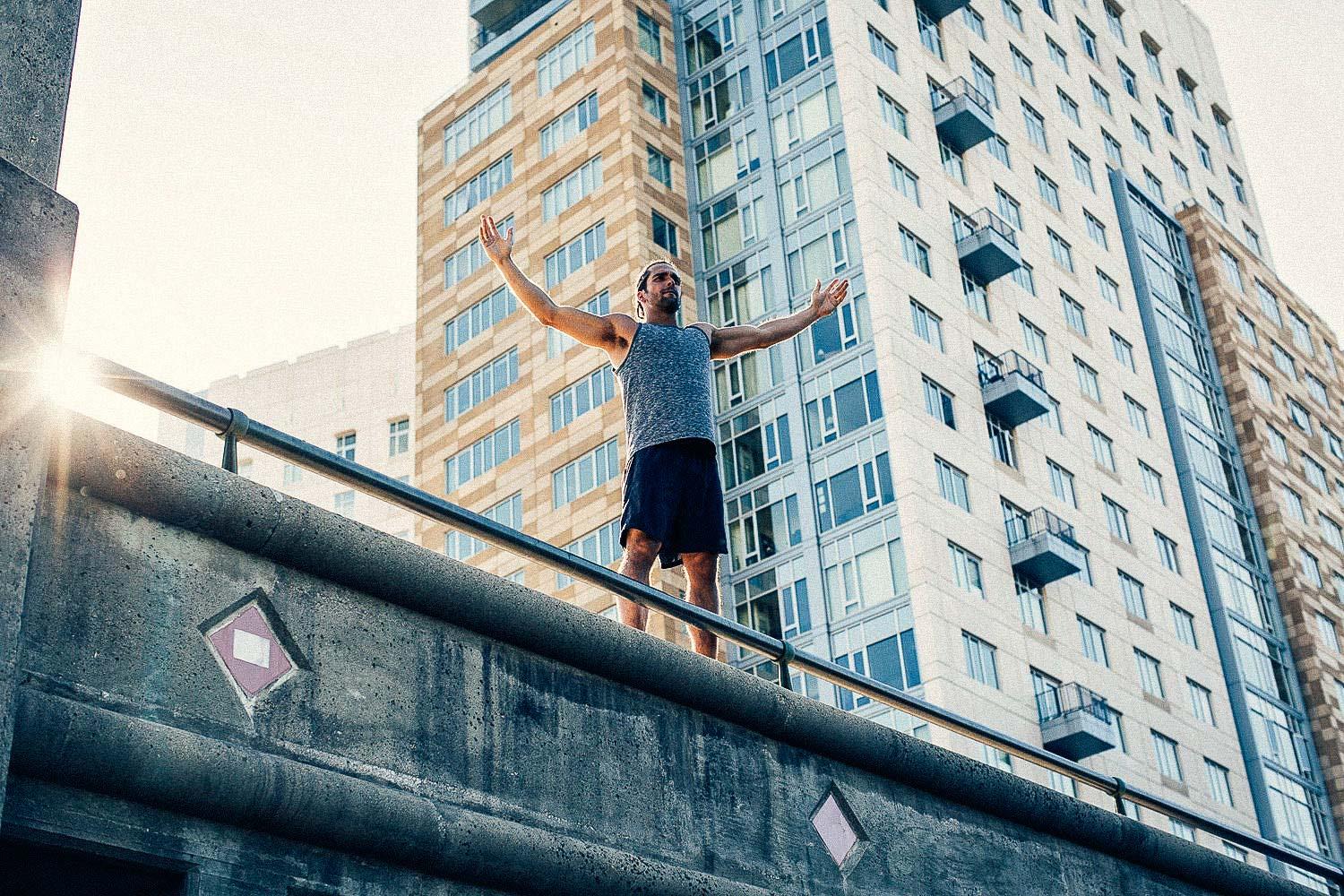
What other people, ideas or vibes influence you?
I’m really inspired by popular culture in general, youth culture and younger generations. One thing I find interesting is how the youth are interacting with technology and I find myself trying to understand it, appreciate it and engage with it in a real way, on a personal and business level. For me, the bigger picture from that in terms of pop culture is about how we interact with television, print media, sports and advertising.
I’m a big sports fan and watching how those things mix up with social media, advertising and corporate sponsorship is fascinating. Sports brands really excite me as do outdoorsy companies like Patagonia, how they operate and the social messages behind them. These brands have such power and this means they also have a huge environmental and social responsibility.
Do you spend much time reflecting on yourself, on where you are now?
Yeah I do. I’m not naïve to the fact that I’ve had successes in terms of my art career, my commercial career and I think those, in part, are due to hard work and timing. We’ve just moved to this new house. We bought this really nice piece of land, across the street from the beach. We have an acre of land in New England in the city area, which is unheard of. Looking out of the window, I’m literally reminded of what’s important in terms of my family, nature, remembering all the hard work, and the good things that have come so far and led to this moment.

Jesse is represented by Tea & Water Pictures. You can see more of his work here:
